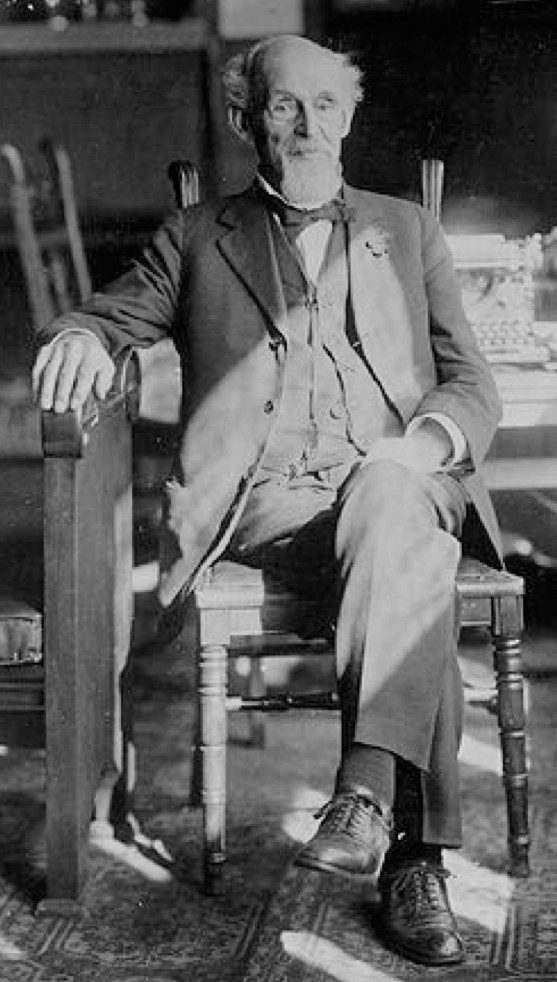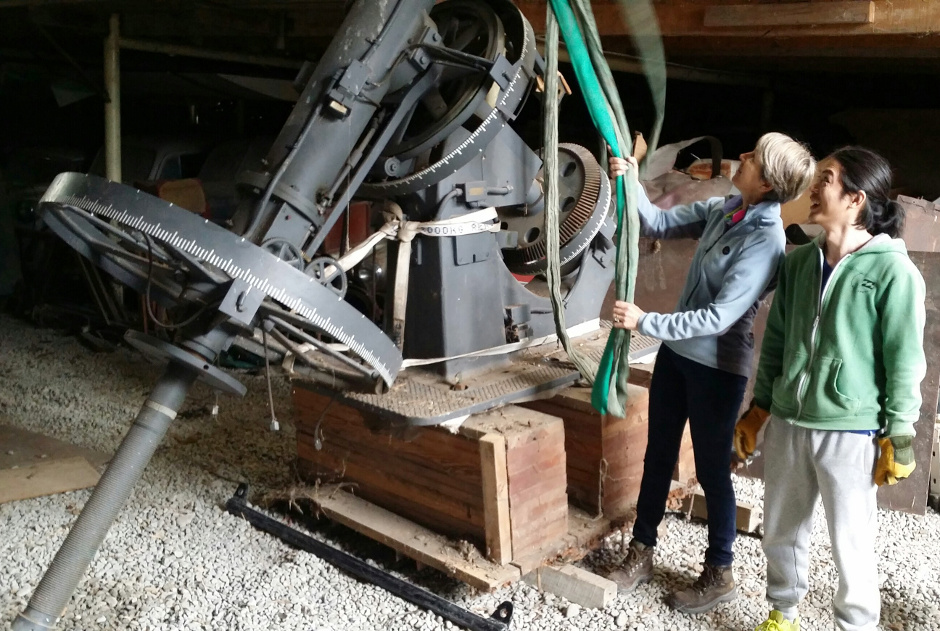

The 46-cm diameter, 8-metre focal length achromatic doublet lens of the great refractor was made by renowned Pennsylvanian optician John Brashear (1840-1920) in the early 1890s. It was the primary instrument used by Percival Lowell for his Mars studies in 1894 at the Lowell Observatory in Arizona, until it was replaced by the 24-inch (61-cm) Alvan Clark refractor.
In 1895‐96, the 46-cm Brashear lens was fitted in a new 8-metre-long tube atop a 5.4-metre-high German equatorial mount and pier fabricated by the illustrious Warner & Swasay Co. of Cleveland, Ohio (the same company that built the 36‐inch Lick and 40‐inch Yerkes refractors) and installed in a 10‐metre diameter dome at the Flower Observatory, owned by the University of Pennsylvania. The complete instrument weighed in excess of 7 tons.
For over half a century, the 18‐inch Brashear refractor produced a wealth of valuable research data. Walter Leight, keen Mars observer and instrument maker at Flower Observatory, held the Brashear in high regard. He is documented as having used powers of 972x to observe planet Saturn stating, “We often saw things (like numerous subdivisions in Saturn’s rings) we weren’t supposed to see and we didn’t mention them.” Walter Haas (ALPO founder) is also on record as stating that the 18‐inch gave him the best views of Saturn he’d had in any telescope.

The Brashear arrived at Mount John in October 1963, but funds were not forthcoming for the construction of a suitable dome and auxilliary buildings, so the instrument (sans optics) remainded in storage on the mountain until 1990 when it was transferred to the Yaldhurst Museum near Christchurch. Sadly, Yaldhurst was unable to raise enough money to build a home large enough for the assembled telescope, so it was consigned to an outbuilding for a further 25 years.
A brighter future
Based in Tekapo township in the shadow of Mount John is the headquarters of Earth & Sky Ltd., an astrotourism venture that offers stargazing tours at its two public outreach observatories at Cowan’s Hill and atop Mount John amid the domes of the university research facilities. The Mackenzie District’s unusual microclimate ensures that the region is blessed with a high proportion of clear, exceptionally dark nights. The IDA recently declared the area an International Dark Sky Reserve.
Earth & Sky is about to embark on the construction of an ambitious Astronomy Centre, the restored Brashear telescope forming the centrepiece of a working museum that will also feature a collection of displays about leading NZ astronomers and the site testing and history of Mount John.
Munro said the big unknown was how much the telescope would cost to restore, but the plan was to time the restoration so it could be installed in the Astronomy Centre in time for its opening. Until such time as it goes on display, the Brashear has a temporary home at the spacious workshop of Mackenzie Electrical in the township of Fairlie, just 30 minutes drive east of Tekapo.
The 18‐inch Brashear telescope is one of a half dozen giant refractors known to exist in the entire Southern Hemisphere and one of just two dating from the 19th century.



